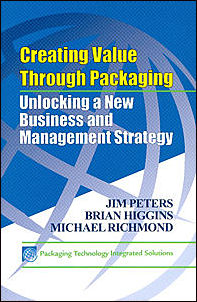Question: Do ROI pressures put a damper on innovation? Do they kill good ideas? How best should the industry address the issue of effectiveness of design?
| Scott Lucas, Interbrand  |
ROI pressure does not kill good ideas; in fact it creates the opportunity for brand owners and their agencies to develop bigger and better ideas. |
| Mike Branson, Pearlfisher  |
No – and they shouldn’t (put a damper on innovation). This basically comes down to a question of mindset. |
| Nick Foley, Landor  |
The last few years have not been ideal for those keen to develop bold, new innovation projects. |

ROI pressure does not kill good ideas; in fact it creates the opportunity for brand owners and their agencies to develop bigger and better ideas. Of course, this only occurs when the ROI pressure can be channeled into motivation for change and encouragement for bold decision-making. On one hand, such an approach could appear more risky – particularly in today’s economy – but study after study shows that brands which innovate during a recession emerge stronger than before: Look at the success of Microsoft, which was established in 1975, and Apple’s iPod, which launched October 23, 2001 – both recessionary periods.
The first task is to better define the specific ROI pressure: Is it sales growth? Margin growth? Establishing a deeper connection with core users to retain them during tough times? Or collecting new users to backfill those who might desert your brand? Once you identify the business challenge and where the return will be most impactful, that knowledge can be used as a reason for change, the impetus for innovation.
All of this talk means nothing if bold decisions aren’t made in the planning and execution stages of a project. At this point, brands need to leverage carefully planned research that is tied to business needs and framed in a greater understanding of the shopper/consumer and their acceptance of innovation, as well as how it impacts their purchase drivers. When properly implemented, this approach can provide a new type of ROI – Return on Innovation.

No – and they shouldn’t (put a damper on innovation). This basically comes down to a question of mindset. Now - more than ever before - placing value on design should be seen as an investment in a healthy brand and business future. Design is the single most tangible interface between anything man made and with the people who use it. Therefore, in a commercial context, how well it is designed - in both the function and aesthetic - will affect the bottom line and business fortunes.
Again, no (they don't kill good ideas). And we should be looking at this from the positive and not the negative. Looking at how good design ideas can yield a successful return on investment. For example, if we look at design in the context of retail then we see that when all else is equal in terms of product quality and price, it is better design that creates the competitive business advantage. And, in a world of shorter attention spans for the over-choiced consumer, it is mould breaking, forward-thinking design that meets evolving human needs, which stands out – and sells.
Creativity does not have to be at the cost of commercially effective design – good design is both.
The DEAs (the Design Effectiveness Awards) run by the UK based DBA (Design Business Association) is one of the only awards programs globally that uses commercial data as a key judging criteria. But, in addition to awards schemes such as the DEAs, we believe that the design industry needs to be better able to argue the case for effectiveness and engage big business so that they appreciate the added value that good design brings and so that commercial results – as well as the aesthetic - can be celebrated.
Forward-thinking brand owners and brand marketers have already realized a long-term investment in design and understand the power of design to transform brands. They see design as a crucial component of success and understand that they are commissioning an essential skill (not service) as the foundation of growth. And we need to start tracking progress over time with these open-minded clients and then communicate it.
As an industry we all have a responsibility and vested interest in presenting the case of design effectiveness and demonstrating its real value to our clients – and to the wider business world. Above all, we need to promote the fact that the design effectiveness story is a self-fulfilling prophecy.

The last few years have not been ideal for those keen to develop bold, new innovation projects. The sub-prime crisis closely followed by the global financial crisis (GFC) has given management accountants powerful fodder to curtail creative, innovative folk keen to push the parameters of existing or new brands through distinctive and compelling innovation.
Interestingly, the parallels between innovation and finance are closer than many might think. Both can be easily mapped on a two-axis model with risk on the Y axis and return on the X. In times of financial instability humans have a natural predisposition towards minimizing risk. You can probably triple this for the average management accountant and double it for a typical CEO, who is struggling to manage the cash flow and profitability of mature brand portfolios during an economic slowdown. Yet, the history of innovative brands suggests that the antithesis of the above behavior is precisely what savvy brand custodians should be doing when the human herd is rushing toward safer pastures. Would the Internet have been developed if a three-year ROI guaranteeing net positive cash flows had been one of the parameters for its success?
To accurately assess how ROI pressures impact innovation, it is worth considering the respective culture(s) evident in an organization. For innovation to flourish, employees need to feel they are part of an environment in which a number of behaviors are actively encouraged.
Do the marketing and innovation teams feel encouraged to “play?" How much of a role does curiosity play? Someone had to be fairly curious to contemplate how a vacuum could be even more effective without a bag, yet clearly that type of curiosity led to the invention of the Dyson vacuum cleaner. Is imagination rewarded or is it something discouraged because of its intangible nature? Over the past two years, few companies have encouraged a dare-to-dream philosophy, yet it is this type of imaginative process that can lead to unexpected and dramatic brand developments-think the Guinness widget.
Conservative environments typically have an aversion to risk and endeavor to mitigate it by reducing mistakes. Henry Ford once remarked that “Failure is simply the opportunity to begin again, this time more intelligently.” Empowering a team to experiment and make mistakes is unlikely to lead to a consistent ROI; it will, however, increase the likelihood of a major breakthrough. Paradigm shifts don’t happen through tweaking.
Adopting an ongoing approach to innovation is critical in making the transition to a dynamic and inventive culture. ROI pressures can live comfortably within such an environment, but the focus on disparate projects needs to become minimized. A prescribed percentage of a company’s revenue should contribute to innovation and become an integral part of the business culture. Companies such as 3M that could easily have stopped with some of their innovative successes-think Post-it Notes or Scotch tape-have chosen to budget for innovation by allocating a certain amount of funding for future yearly budgets.
A final area in which innovation and ROI don’t comfortably dwell is courage. Courage typically accompanies risk and does not ladder up to consistent, predictable revenue flows. For innovation to thrive, people must have the courage to try new and different things. This is not to say that courageous innovation and measured ROI can’t coexist, it’s simply that the parameters of ROI need to reflect such an attitude.
As the global economy emerges from its post-GFC haze, attitudes toward risk aversion are likely to ease. Companies that adopt a progressive approach to measuring the ROI on innovation are likely to be the winners as consumers increase their appetite for new offerings and business confidence returns to more normal settings.
Looking for a reprint of this article?
From high-res PDFs to custom plaques, order your copy today!






